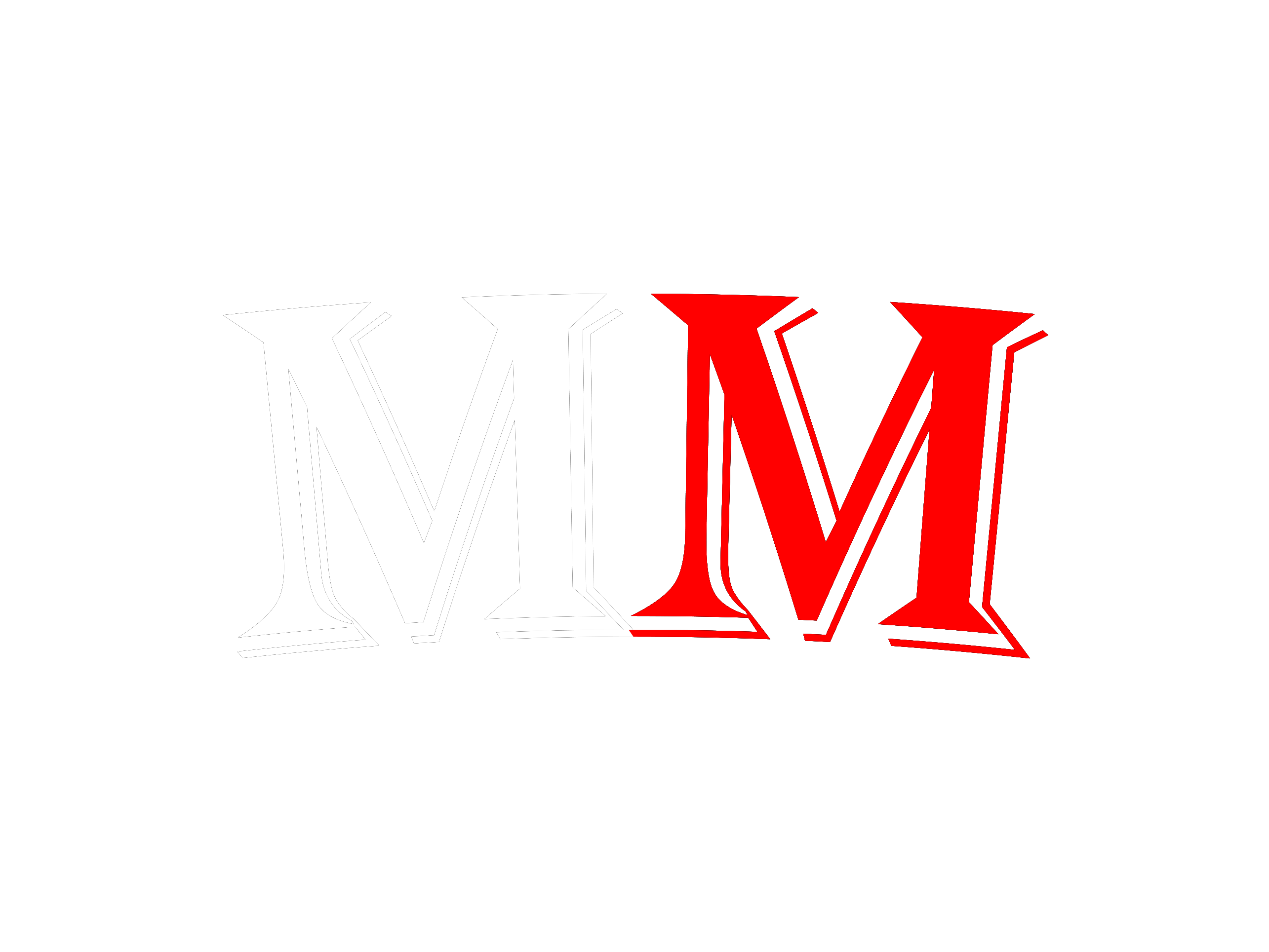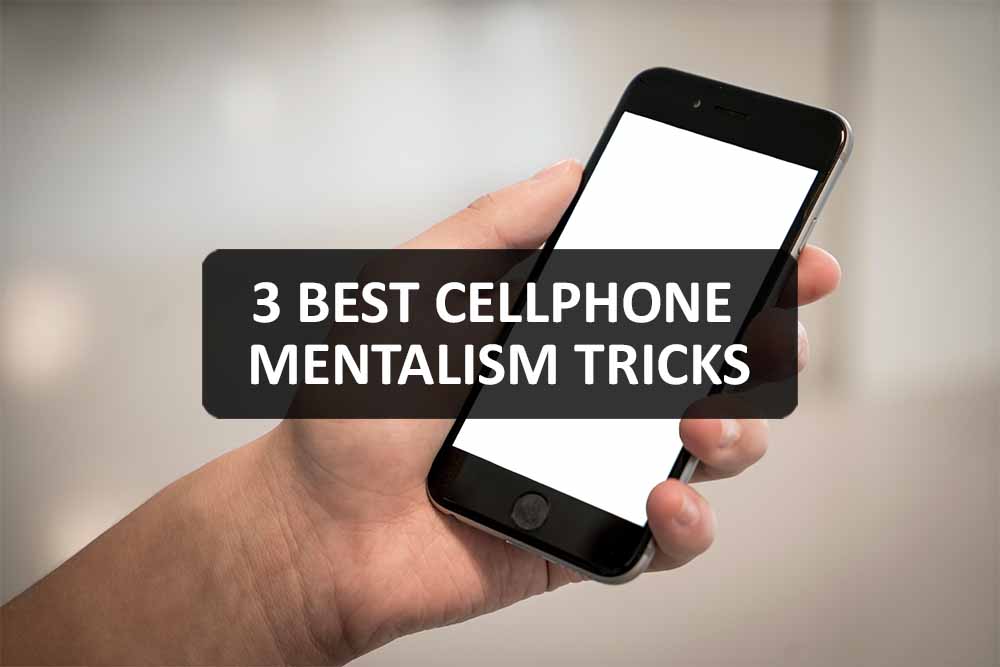In this day and age, with the advent of technology, it’s no surprise that mentalists have found a way to use electronic devices in their performances.
And what better gadget to use than the one most people have — a mobile phone?
To be sure, these cellphone mentalism tricks are just as amazing and mind-boggling – sure to impress a crowd or your family and friends.
So, are you interested in learning some cellphone mentalism tricks?
You’ve come to the right place.
Here, we’re going to talk about the 3 best cellphone mentalism tricks. We’re going to explain the techniques behind them so you can impress others as well.
Let’s get started!
Cellphone Mentalism Trick #1: The Wizard
This mentalism act gives a two-fold illusion. One, you can read the thoughts of your subject by guessing what the card was. Two, you can telepathically communicate with another person because THEY can determine what the subject’s card is.
What the Audience Sees
Begin by shuffling a deck of cards. With the cards facing away from you, rifle through it and ask your participant to say “stop” at any time.
When they do, allow them to have a clear view of the card and ask them to keep it in mind. Once the subject confirms to know what it is, you return the deck inside its box.
Tell your subject you’re going to call a friend called The Wizard. The reason for the nickname is that he can read someone’s thoughts from miles away. So you’re not going to be the one guessing the card — The Wizard is.
Use your mobile phone to call and, when someone picks up, ask for the Wizard. When he comes to the phone, tell him about your situation — that you have someone with you who’s thinking of a randomly chosen card from a deck. Inform The Wizard that you’ll hand the phone over and that he should tell the subject what his card was.
Give the phone to your subject, and The Wizard will tell him the correct card.
What Actually Happens
Just like all mentalism tricks, there is a perfectly reasonable explanation for what happened.
First off, you need to set this trick up by having someone play The Wizard — he’s part of your performance. The two of you have to work out a system for him to identify the correct card once you call.
Now, when you’re doing the actual trick, a crucial moment is when you rifle the card and tell the subject to choose one. You have to know what he picked — and this is done by doing a peek.
When you close the deck after showing them the chosen card, create a break with your pinkie. You then do a small action, which is to flip the cards over in your hands as though you would the pages of the book. Without any additional effort, the deck cracks from the break, giving you a glimpse of the chosen card.
Follow this with a big action — inserting the deck into its box. It gives you a reason to look down for the peek.
Then it’s time to call your friend. As soon as your friend answers the phone and you ask for The Wizard, he’ll start naming the suits one at a time — this is something that you agree on beforehand.
Interrupt him when he gets to the right one — you can say something like, “I have someone here with me, and I told him The Wizard knows what card he chose.”
Your friend, once he knows what the suit is, begins naming card values. Similar to what you did before, you interrupt him when he gets to the right one. Now he knows the exact card your subject has.
Cellphone Mentalism Trick #2: The PIN Code
Unlike The Wizard trick, the PIN code trick doesn’t require any peeks or breaks. But you do need to have a mobile phone.
What the Audience Sees
Take your friend’s phone and tell your friend that you can guess what his PIN code is. If they express disbelief, insist that you can do it. When they challenge you to do it, the trick begins.
Get a calculator (that you prepared) and hand it back to him.
Before anything else, make sure to confirm the number of digits his PIN has (some phones have 6, others only need 4). Tell him to write his PIN on the calculator.
Then, tell him to think of any number. Emphasize that it can be any number — the sky’s the limit. Once he has it, have him multiply the number by his PIN code.
At this point, make a fuss about making sure you can’t see what he’s doing — you can even turn around if you want.
Tell him to let you know once he’s done. Also, tell him you’re going to know his PIN from the number on the calculator. Remind him that you don’t know what number he started with and that it could have been anything.
Look at the calculator. Click a few buttons and determine what the PIN is.
Finally, get his phone and watch him be amazed as you write his PIN down and open the lock.
What Actually Happens
Once you have the calculator back in your hands and it shows the result of the calculation — the subject’s chosen number multiplied by the PIN — simply press 1 followed by the equals sign. The number that appears is his PIN code.
Note: This will only work on calculators with the constant feature.
If he has a 6-digit pin, and only five digits appear, it means the first digit is 0. The same logic applies if there are only four digits — it means his PIN begins with 00.
Cellphone Mentalism Trick #3: Photographic Evidence
Guessing a card your subject chose is one thing — having photographic evidence of it, however, brings the experience to a whole other level.
This trick does just that.
What the Audience Sees
Begin your trick with a prediction.
Get a deck and, with the cards facing you, go through it and choose one at random. Pop it up and announce that you think this is the card your subject will choose. Make sure all cards are facing away from your audience.
To back up your claim, say that you’ll take a picture of it. Borrow a mobile phone from the audience and ask someone to hold up the card. Make sure no one can see it — you can even go as far as saying it’s your prediction, and you don’t want to influence the audience in any way.
Use the phone to take a picture and then set the phone on the table facedown. Shuffle the deck, spread the cards, and ask your audience to choose one. To make it feel random (and to show your level of confidence in your abilities), ask them if they’re sure. If they’re not, tell them they can change their mind and choose another.
Once they’re sure, pluck the card and transfer it to the top of the deck.
Flip the first card over and declare that you were right. Have the audience check the phone with the picture, and it will show the same card.
What Actually Happens
Your chosen card — the one you’ll take a photo of — is the top card on the deck. If you spread your deck from left to right, it’ll be the first card on your left.
Now, choose a contrast card when you’re making your “prediction”.
A contrast card is one with an opposing color suit and face from the one you’ll photograph. If, for example, the card at the end is a queen of hearts, choose an ace of spades as your contrast card.
Give the audience a peek at your contrast card. While you’re asking for someone to take out a cellphone, allow the audience to get a glimpse of the card. You can accomplish this by making gestures that flash the face of the card in their direction. Try and make this as natural as possible, so the audience won’t know you’re doing it on purpose.
This creates a psychological effect — when people think they’ve seen the card you’re holding, they no longer pay as much attention because they think they’ve gotten all the information they need. It is also why you need to keep emphasizing that no one is supposed to see the card. The more you say it, the more people try to sneak a peek.
The next step is to take a picture of someone holding up the card. It pulls your audience in because of the illusion that you don’t have a lot of control over things — they’ve “accidentally” seen your contrast card, the phone is from the audience, and they’re holding up the card for the photo.
After taking the shot, set the phone face down on the table. Make a show of putting the contrast card on top of the deck, but do a top change. It ensures your prediction card (which has remained on top of the deck this entire time) stays on top. The contrast card becomes the second card in the deck.
Do a couple of false cuts to give the impression that you’ve put the prediction card (and the contrast card) somewhere in the middle of the deck. In truth, it remains on top.
Spread the deck again and have them choose a card (don’t make them see it), spin it out so you can put it on top of the deck. While you’re doing this, use the thumb of the hand holding the deck to push out your prediction card.
It sets you up for a double lift (when you look like you’re only turning the top card from the deck, but you’re turning two). When you do your last move — the flip of the “top” card — you’re showing the SECOND CARD, which is the one you predicted.
Remember that your audience caught glimpses of the contrast card, so when you say the right card came up, they’ll think you’re wrong. But when you check the photo, the same card is shown, which adds another layer to your performance.
Wrapping It Up
Using cellphones in your performances puts a different spin to it. For tricks like The Wizard, it also allows you to do tricks that previously weren’t possible.
It doesn’t mean that you can forgo traditional mentalism techniques such as mental math, banking on psychological responses, and misdirection. You’ll realize that you use these just as much as you do in tricks that don’t involve technology.
Using a cellphone just adds a layer of complexity to your act, allowing your audience to have a richer experience.
Technology is here to stay, so you might as well find ways to build it in your performances. It’s one way for mentalism to evolve and remain relevant.
So now it’s up to you — choose one of these tricks and start practicing!

